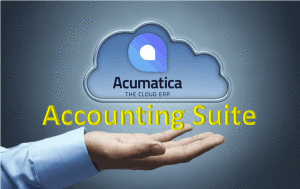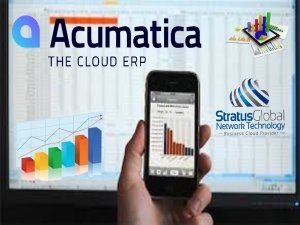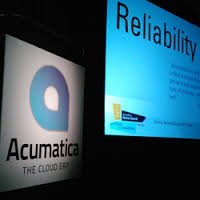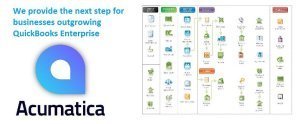General Ledger

The General Ledger module is the central financial application of Acumatica ERP, integrating with other modules and giving instant access to mission-critical financial data. By using it, you can monitor all transactions entered or automatically generated in the General Ledger module. Each time a transaction is released in any other module, the information is posted to General Ledger.
The primary features of the General Ledger module are:
User-Definable Financial Year and Periods
A financial year is a year long period with the start date you have specified. You can define any number of accounting periods within the financial year, and you can add a special adjustment period. Once you have defined financial periods, they will be generated for each subsequent financial year.
Support for Multiple Ledgers
Acumatica ERP supports the following types of ledgers: Actual, Budget, Reporting, and Statistical. If your company has multiple branches, each of the branches may have one actual ledger and unlimited number of ledgers of other types.
System of Accounts that Supports Your Organization Operations
You can establish the system of accounts that best supports your company’s  operations. In Acumatica ERP, an account consists of a natural account and a subaccount. User-defined subaccounts reflect your operational needs, support reporting and analytical needs, and enable you to keep the number of natural accounts manageable.
operations. In Acumatica ERP, an account consists of a natural account and a subaccount. User-defined subaccounts reflect your operational needs, support reporting and analytical needs, and enable you to keep the number of natural accounts manageable.
The chart of accounts allows four account types: assets, liabilities (balance sheet accounts), income, and expenses (income statement accounts). General Ledger accounts could be categorized into user-defined account classes, such as petty cash and travel expenses, for convenient grouping of accounts on reports and for budgeting. Acumatica ERP has two special system-maintained accounts: YTD Net Income and Retained Earnings.
Flexible Account and Sub-Account Identifiers
Acumatica ERP accommodates flexible configuration of account and subaccount identifiers. To make account and subaccount identifiers meaningful for users of the system, you may compose the identifiers of several segments. The total length of identifiers may be up to 30 characters.
Batch Processing and Scheduling of Transactions
General Ledger transactions are organized in batches. Transactions posted to the General Ledger module can be manually entered or system-generated, posted from other modules, such as Accounts Payable, Accounts Receivable, Cash Management, and Inventory. Batches with recurring transactions may be assigned to easy-to-configure schedules to be repeated periodically. Period-end adjustment transactions can generate auto-reversing batches.
Additional functionality:
Multi-Currency Support
If multi-currency support is enabled, the system will use the base currency for updating account balances, but users can enter transactions in a foreign currency. Also, you can maintain accounts denominated to foreign currencies. The system will keep the balance of such accounts in the base currency and the currency of denomination. You can define default currency exchange rate types, to make data entry easier.
Additional functionality:
 Flexible Period-End Closing Procedures
Flexible Period-End Closing Procedures
Acumatica ERP provides multiple options so that you can configure period closing procedures in accordance with your company policies. At any point in time you can have several active periods. Activating a period doesn’t require closing a previous one.
Trial Balance Import Capabilities
By using Acumatica ERP, you can import trial balance data from consolidation units for reporting, or from third-party software to initialize the system during implementation. You can export the data in .csv or .xlsx format and import the data to Acumatica ERP, thus saving time and preventing input mistakes.
Automation of Allocations
With Acumatica ERP, you can use allocation templates to automate multiple allocations. You create an allocation source by specifying a group of accounts and subaccounts, with the help of grouping masks. Acumatica ERP lets you automatically post amounts to multiple destination accounts and distribute the source amount by percentages, quantities, and PTD or YTD balances of the destination account.
Flexible Budgeting Capabilities
Acumatica ERP makes creating budgets an easy task. You can create a single budget structure that will be used by all branches and which consists of multiple levels of articles and sub-articles. You can create virtually unlimited number of budgets and budget scenarios, compare budgets to another budgets or to actual data. Access to budget articles is managed by using restriction groups.
General Ledger Consolidations
Using the General Ledger module, you can perform various consolidation tasks. If your organization is a consolidation unit, you can configure mapping of the accounts and sub accounts to the parent company accounts and sub accounts, as well as specify which ledgers contain consolidation data.
If your organization is a parent company, you can:
- Configure remote access to the websites of each of the consolidation units.
- Create a ledger to hold the consolidated data.
- Periodically import consolidation data from the website of each consolidation

- Run consolidated reports.
To restrict access to sensitive accounts and sub accounts, assign them to a restriction group. Only the users assigned to the same restriction group will have permission to work with the applicable accounts and sub accounts.
Analytical Report Manager
Use the Analytical Report Manager to define and edit the analytic reports that consolidate and summarize data in meaningful ways that suit your business. To generate the reports for specific periods or to limit the volume of data displayed in the report, you can use data filters.
Audit Trail
The General Ledger module provides a full audit trail of journal transactions, along with information on the user who entered the transaction and the user who modified the record. The system does not allow any user to delete or cancel posted General Ledger transactions. The only possible way to correct General Ledger balances is to enter a correcting General Ledger transaction with appropriate comments. The system can also be configured to keep modification history for any transaction.
Other Features and Options
The General Ledger module also supports the following features:
- Sub accounts along with accounts in every transaction record, for in-depth analysis
- Transaction posting in summary or in detail
- Multiple options for configuring financial periods and possibility to define custom periods
- Extensive drill-down capabilities available for inquiries, reports, and processing forms
- Data consolidation for any number of reporting units
- Efficient data entry with many user-defined default values
- Ability to perform allocations at any period-end time
